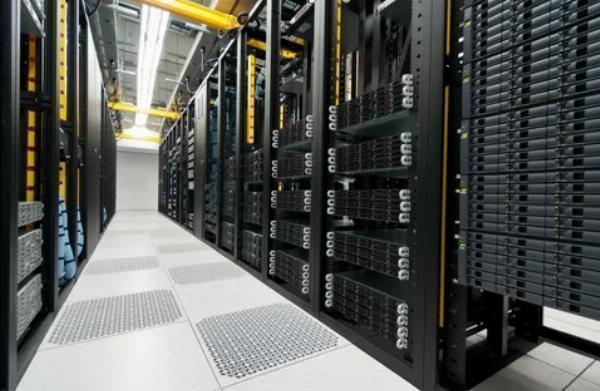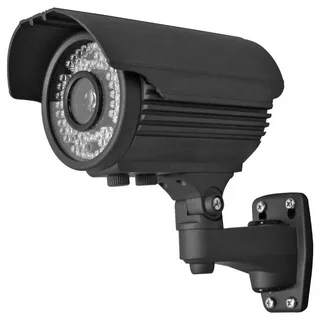The Benefits of NAS for Large-Scale Media Libraries

Strong 8k brings an ultra-HD IPTV experience to your living room and your pocket.
In today's digital age, media organizations, production houses, and content creators are managing vast media libraries, often with hundreds of terabytes of data. From video files and audio tracks to high-resolution images and project archives, the need for a scalable, efficient, and reliable storage solution is critical. Network Attached Storage (NAS) has emerged as a practical and cost-effective solution for managing large-scale media libraries, offering key benefits in terms of accessibility, scalability, and data protection. This article explores the advantages of using NAS for large media collections.
Centralized Storage for Media Files
Managing a large-scale media library requires a centralized system that allows easy access to all media assets in one location. NAS provides a centralized repository for all types of media files, enabling teams to store, organize, and retrieve their data seamlessly. This eliminates the need for physical storage devices like hard drives or multiple servers scattered across different locations.
NAS systems connect to a local area network (LAN), which allows multiple users to access the same media files simultaneously. This centralized access simplifies workflows in media production, where editors, producers, and designers often need to work collaboratively on the same project. With NAS, everyone can access the media they need from a shared storage pool without delays.
Scalability for Growing Media Libraries
Media libraries grow over time, especially in industries such as film production, broadcasting, and digital content creation. NAS offers the scalability necessary to accommodate expanding media libraries. Many NAS solutions allow for the easy addition of more storage drives as your data requirements grow. This modular approach ensures that you can continue expanding your media storage capacity without the need to overhaul your existing system.
As media files, especially video, tend to be extremely large, scalability becomes essential for managing high-resolution formats like 4K and 8K video. With NAS, you can store and manage these large files without worrying about hitting storage limits, making it ideal for media organizations with growing archives of content.
Enhanced Data Protection and Redundancy
Data protection is a top priority for large media libraries, especially when dealing with valuable content that must be preserved for long-term use. NAS systems typically offer built-in redundancy and data protection features through RAID (Redundant Array of Independent Disks) configurations. RAID ensures that even if one or more drives in the NAS system fail, the data remains intact and can be recovered without disruption.
For media organizations, this level of data security is essential. Whether you're managing a digital archive of film footage or maintaining a large collection of client projects, NAS provides peace of mind with features like automated backups, real-time replication, and protection against hardware failure. This reduces the risk of data loss and ensures that critical media files are always available when needed.
High-Speed Access for Media Workflows
In large media libraries, speed and performance are crucial for day-to-day operations. NAS systems are designed to offer high-speed access to stored files, allowing teams to work with large media assets such as video and high-resolution images without experiencing lags or slowdowns. Many NAS solutions are equipped with advanced networking features such as multi-gigabit Ethernet connections, which support faster file transfer speeds and minimize latency.
For media professionals, this means editors can quickly retrieve and manipulate large files, video projects can be streamed and edited in real time, and media assets can be shared across departments without delay. NAS ensures that creative professionals can work efficiently, even when dealing with massive amounts of data.
Remote Access and Collaboration
One of the significant advantages of NAS devices are its ability to support remote access. In an era where remote work is becoming more prevalent, media professionals often need to access and work on media files from different locations. NAS provides the ability to securely access media files over the internet, allowing users to collaborate on projects regardless of geographic location.
For media organizations with teams spread across multiple locations or freelancers contributing to projects from around the world, NAS enables seamless collaboration without the need to be physically present at the office. This remote access feature is especially valuable for media production companies that need to transfer and access large video files or audio projects between locations quickly and securely.
Cost-Effective Media Management
Large-scale media storage solutions, such as cloud storage, can become expensive over time, particularly as data volumes increase. NAS offers a more cost-effective alternative, allowing organizations to purchase only the hardware they need and expand storage incrementally. Once the initial investment in a NAS system is made, the ongoing costs are generally lower than cloud-based storage options, especially for organizations with high data storage demands.
Moreover, NAS provides long-term savings by eliminating subscription fees associated with cloud storage. Media companies can control their own storage hardware and avoid paying for external services, making NAS an affordable solution for large media libraries that need consistent access and long-term data retention.
Media File Organization and Management
NAS systems allow for the easy organization and management of media files. With advanced file management software built into most NAS solutions, users can create structured folder systems, apply metadata tags, and categorize media files in a way that simplifies file retrieval. This ensures that even in a large-scale media library, users can quickly find the specific assets they need.
NAS also supports various media formats, making it compatible with a wide range of file types used in the media industry. From video editing software to digital asset management tools, NAS systems can integrate with various media-related applications, streamlining workflows and improving overall efficiency in media management.
Long-Term Media Archiving
For media organizations that need to store content for long periods, NAS offers an ideal solution for long-term archiving. Media libraries often contain valuable content that needs to be preserved for future use, such as raw footage, completed projects, or media assets that may need to be repurposed in the future. NAS ensures that these archives remain accessible and protected over time, while offering the scalability to expand storage capacity as the library grows.
With NAS, long-term data storage is secure and reliable, making it an excellent choice for media companies looking to preserve large archives without recurring costs or risk of data loss.
Conclusion
For large-scale media libraries, NAS provides an invaluable storage solution, offering centralized access, scalability, data protection, and cost efficiency. Whether used in video production, broadcasting, or digital content creation, NAS simplifies media management workflows and ensures that media assets are stored securely and accessed quickly. As the media industry continues to evolve, NAS remains a robust and reliable option for managing and preserving large media libraries.
Note: IndiBlogHub features both user-submitted and editorial content. We do not verify third-party contributions. Read our Disclaimer and Privacy Policyfor details.







